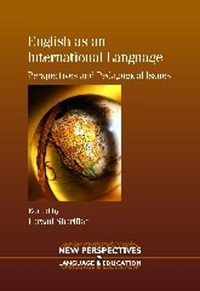Two languages can resemble each other in the categories, constructions, and types of meaning they use; and in the forms they employ to express these. Such resemblances may be the consequence of universal characteristics of language, of chance or coincidence, of the borrowing by one language of another's words, or of the diffusion of grammatical, phonetic, and phonological characteristics that takes place when languages come into contact. Languages sometimes show
likeness because they have borrowed not from each other but from a third language. Languages that come from the same ancestor may have similar grammatical categories and meanings expressed by similar
forms: such languages are said to be genetically affiliated. This book considers how and why forms and meanings of different languages at different times may resemble one another. Its editors and authors aim (a) to explain and identify the relationship between areal diffusion and the genetic development of languages, and (b) to discover the means of distinguishing what may cause one language to share the characteristics of another. The introduction outlines the issues that
underlie these aims, introduces the chapters which follow, and comments on recurrent conclusions by the contributors. The problems are formidable and the pitfalls numerous: for example, several of the
authors draw attention to the inadequacy of the family tree diagram as the main metaphor for language relationship. The authors range over Ancient Anatolia, Modern Anatolia, Australia, Amazonia, Oceania, Southeast and East Asia, and Sub-Saharan Africa. The book includes an archaeologist's view on what material evidence offers to explain cultural and linguistic change, and a general discussion of which kinds of linguistic feature can and cannot be borrowed. The chapters are
accessibly-written and illustrated by twenty maps. The book will interest all students of the causes and consequences of language change and evolution.
Industry Reviews
`extremely rich, competent, and well-edited.'
Language,
`Review from previous edition This book is a pleasure to sample, and will serve as a resource for years to come. The salutary lesson that emerges from every chapter is that diffusion studies are necessarily complementary to genetic studies, and that our methodology for studying various types of contact needs to be extended and refined.'
Diachronica
`Highly recommended for all those interested in historical linguistics, linguistic typology, language contact and language change ... this book represents a good opportunity to meditate, on the one side, on models of language evolution and, on the other side, on actual phenomena of language change.'
LINGUIST List
`Invaluable ... the uniformly high quality of the contributions demonstrates that all contributors know whereof they speak ... The geographical range of the contributions is impressive. ...The quality of the production is high.'
The Journal of The Royal Anthropological Institute
`... A book worth acquiring and reading.'
Journal of Linguistics

























